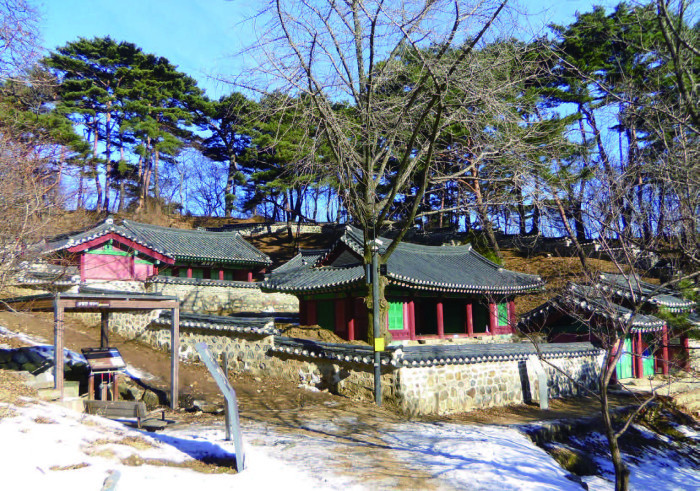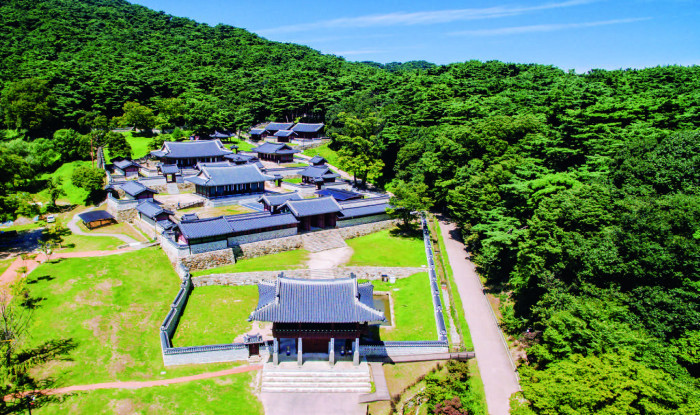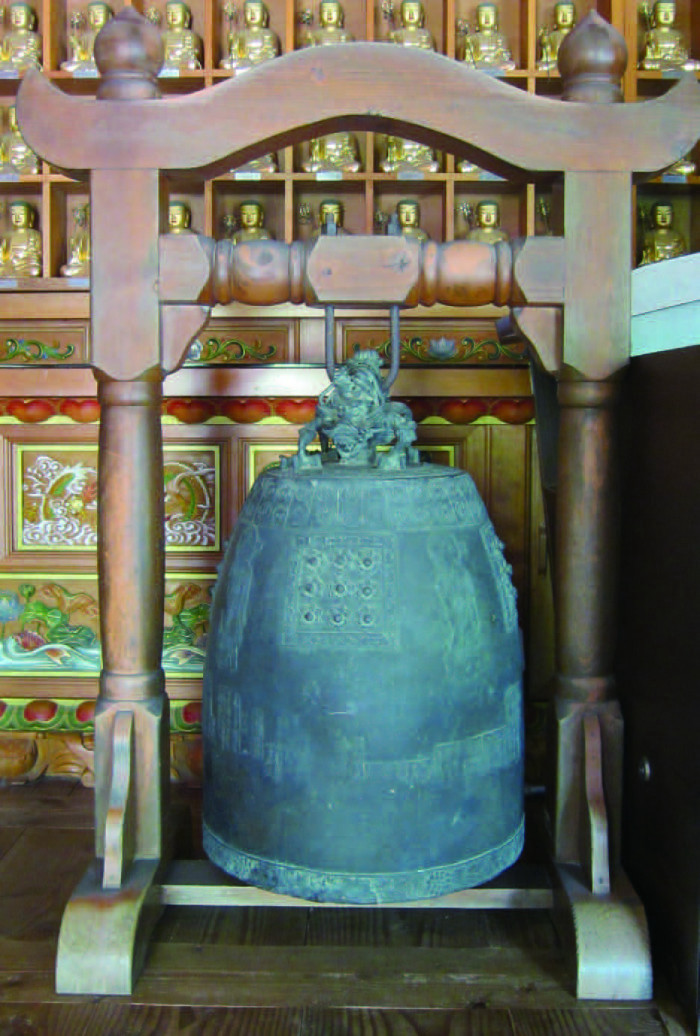GyeongGi Cultural Foundation
Sungnyeoljeon, Haenggung and The bronze bell
The sights of Namhansanseong (2)
"Stories on the Road" is a story about a UNESCO World Heritage site and a story. It will tell you the life and spirit of our ancestors in the ancient road of The old Namhansanseong path. |
Baekje founder King Onjo and the Sungnyeoljeon Shrine

Sungnyeoljeon Shrine
“Too lonely to be alone, so go with eminent vassals”
Through archeological analyses of artifacts discovered near Namhansanseong Fortress, the time of the fortress’ initial construction proved to be the period of the Three States. If you accept the opinion that it was built by Baekje, the existence of Sungnyeoljeon, the shrine of Baekje’s founder King Onjo, within Namhansanseong Fortress can be understood. As you go along an old path that goes up from the Namhansanseong Haenggung Palace to Sueojangdae and passes the entrance, you see separate roads that head towards Sueojangdae and the Sungnyeoljeon Shrine. The shrine was built in 1638 (the 16th year of King Injo’s reign), and enshrines not only King Injo but also General Yi Seo, who played a significant part in the construction of the fortress. According to a myth, King Onjo appeared in a dream of King Injo, and after praising Injo’s character and achievements, kindly asked to be with the eminent vassals among the dead, as he was quite lonely. Thus, King Injo enshrined Yi Seo, a man of merit in construction of the fortress, along with King Onjo. Yi Seo was the man in charge of the construction of Namhansanseong Fortress, and a general who died during the Qing Invasion of Joseon.
Haenggung Palace

Namhansanseong Haenggung Palace
“The temporary residence of kings”
Haenggung Palace is a temporary palace where the king used to stay occasionally away from the main palace at which he always lived. The haenggung system had been implemented since the period of the Three States, and during the Joseon Dynasty many haenggung palaces were constructed for various purposes. Several haenggung palace, like Ganghwa Haenggung Palace, Gwangju Haenggung Palace, Yangju Haenggung Palace, and Jeonju Haenggung Palace, were built in preparation for emergency situations such as a war. They were established to enable the kings to look after state affairs during times of war and to protect the royal family and the portraits of the previous kings as well as valuable items and documents of the royal court. Gwangju Haenggung Palace in Namhansanseong Fortress was a place where King Injo stayed with his vassals to fight against the Qing army. The movements of kings also took place for the treatment of diseases and for vacations. For such purposes, temporary palaces were also built in Onyang, Icheon, and Goseong with hot springs, as well as in Cheongju, Mokcheon, and Jeonui with springs of chosu, a type of water that smells like pepper and is known to cure eye diseases when washed with it.
Bell

Bronze bell of Janggyeongsa Temple
“The bronze bell, the symbol of Janggyeongsa Temple, which found its place after 114 years”
In Daeungjeon Hall of Janggyeongsa Temple, there is a bronze bell, which has been registered as a tangible cultural asset of Gyeonggi-do. The bronze bell is a historic artifact that is closely related to volunteer army activities and the Seungyeong temples of Namhansanseong Fortress, which were utilized as bases for volunteer troops before being completely destroyed and burned to ashes by the Japanese. Only Janggyeongsa Tepmple survived as 10 other temples faced their demise, and Janggyeongsa Temple’s bronze bell is a cultural heritage closely related to this period of tragedy. In 1899, the bronze bell was forcibly relocated to Bongeunsa Temple by the Japanese, and was able to return to Janggyeongsa Temple in 2013, taking another year until it was recognized as a cultural heritage. Having found its place after 114 years, the bell now wakes up everyone at Janggyeongsa Temple with subdued but pleasant echoes during Buddhist services every morning and evening. The gentle bell’s sound seems to carry the Buddhist prayers from monks who had protected the country by hearing the same bell rung 300 years ago.
<Copyright(c)2002 GGC All rights reserved.>
information
Stories on the Road
Published by/ Namhansanseong World Heritage Centre, Gyeonggi-do The Center for Gyeonggi Studies, Gyeonggi Cultural Foundation
Published on/ November 24, 2017
Supervised by/ Lee Ji-hoon, Director of the Center for Gyeonggi Studies, Gyeonggi Cultural Foundation
Planned and coordinated by/ Chae Chi-yong, Senior Researcher at the Center for Gyeonggi Studies, Gyeonggi Cultural Foundation Park Da-seul, Researcher at the Center for Gyeonggi Studies, Gyeonggi Cultural Foundation
keywords
- Writer
- GyeongGi Cultural Foundation
- About
- Everything about the GyeongGi arts and culture, GGCF
- homepage
- http://www.ggcf.kr